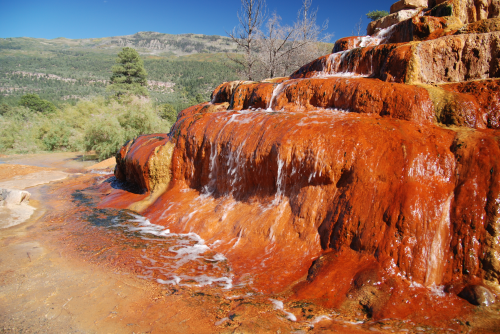
The Pagosa Area Water and Sanitation District (PAWSD) relies on a series of raw water reservoirs for its potable water, and one of them, 13 acre Hatcher Reservoir, had a history of blue-green algae (BGA, or cyanobacteria) blooms, which caused taste and odour problems. PAWSD installed two SolarBee 10000v12 solar-powered units near the water treatment plant intake for partial-lake treatment. The blooms soon disappeared, as did concentrations of source water total organic carbon (TOC). To clear up the entire lake, PAWSD added three more SolarBee units.
"We have reduced copper sulphate treatments by 70%, and the taste and odour problems have disappeared," said Holloman. In addition, TOC levels have decreased by about one to two mg/L. Based on this success, SolarBee units are now installed in four more lakes in the supply system.
Algae disruption
Medora Corporation's long-distance circulation and mixing technology pulls dense water from the level of the intake (typically near the thermocline in an open reservoir, or at the floor in a potable storage tank), transports it upward and then sends it out across the surface in thin, horizontal layers. In raw water reservoirs, the constant horizontal and vertical movement sufficiently disrupts large-celled blue-green algae and allows "good" small-celled algae to predominate, restoring the food chain and returning the reservoir to a healthy state.
In potable water storage tanks, the flow pattern scrubs the floor and sides of the entire tank, replacing disinfectant and killing the bacteria in the most critical parts of the tank.





